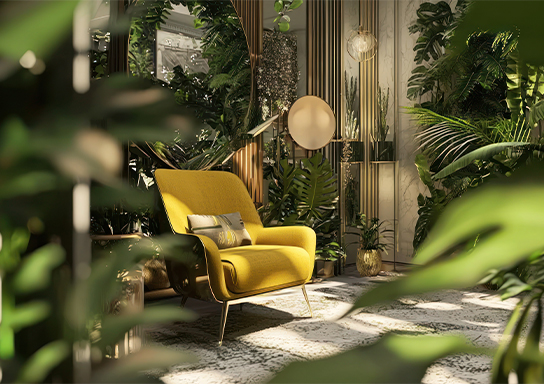
Bringing Nature Indoors: The Rise of Natural Materials in Furniture Design
In recent years, there has been a significant shift in the world of interior design toward using natural materials, as people seek to create environments that feel harmonious, calming, and in tune with nature. Bringing nature indoors isn’t just a trend; it’s a movement that reflects a desire for sustainability, health, and aesthetic warmth. This shift has seen an increasing demand for furniture made from organic materials like wood, rattan, bamboo, and stone, as well as sustainably sourced fabrics that enrich our spaces in both look and feel.
The Allure of Natural Materials
Natural materials hold a timeless appeal due to their organic textures, warm colors, and unique patterns. Unlike synthetic materials, every piece of wood or stone has its own individual characteristics, bringing a sense of uniqueness to furniture. When we see a rattan chair, a wooden coffee table, or a bamboo sideboard, we’re reminded of the outdoors and natural beauty, instantly creating a calming, cozy environment in our homes. Natural materials not only add aesthetic warmth but also foster a sense of connection to the world outside.
For furniture design, the allure lies not just in their look but also in their ability to age gracefully. Wood, for instance, develops character with use, gaining a patina over time that enhances its beauty. This kind of aging adds value to the furniture, making it a worthwhile investment for those looking to create spaces that evolve gracefully over time.
Sustainable Choices in Furniture Design
The shift towards natural materials is largely driven by an increased awareness of sustainability. Consumers are more mindful of the environmental impact of their purchases, and this has fueled a demand for furniture that is responsibly sourced and built to last. Natural materials like reclaimed wood, bamboo, cork, and rattan are renewable and biodegradable, making them far more eco-friendly than synthetic options.
Bamboo, for example, is one of the most sustainable materials available. It grows rapidly and doesn’t require replanting after harvest, which minimizes soil erosion and reduces carbon emissions. Similarly, reclaimed wood repurposes old materials, reducing the need for new logging while adding rustic charm to modern interiors. The furniture industry is seeing a resurgence in these materials as customers increasingly prioritize sustainability without compromising on style.
Creating Healthier Indoor Spaces
Natural materials contribute to a healthier indoor environment by reducing exposure to harmful chemicals often found in synthetic furniture. Many synthetic materials contain volatile organic compounds (VOCs) that release harmful gasses over time. Natural materials, on the other hand, are typically free from these chemicals, contributing to improved air quality. Wood and wool, for instance, are hypoallergenic and can help regulate humidity levels indoors, making for a more comfortable and healthful living environment.
Trends in Natural Material-Based Furniture
From Scandinavian-style wooden furniture to rustic, farmhouse-inspired rattan, the influence of natural materials spans multiple design aesthetics. Minimalist spaces often feature unpainted wood furniture with clean lines, while bohemian designs incorporate woven rattan chairs and macramé accents. In addition, marble and stone furniture pieces are becoming increasingly popular for their durability and organic beauty.
Blending Furniture and Nature
Incorporating natural materials goes beyond selecting the right furniture; it’s about creating a space that reflects balance and mindfulness. By decorating with natural elements, you create an indoor oasis that encourages relaxation, promotes well-being, and aligns with sustainable living. Whether it’s a coffee table made from reclaimed wood, a jute rug, or a rattan chair, these elements bring subtle reminders of the natural world into everyday life.
Conclusion: The Path Ahead for Natural Furniture
As we move forward, the integration of natural materials in furniture design is more than a trend; it’s a lasting change that aligns with values of sustainability, wellness, and timeless aesthetics. Choosing furniture that is both beautiful and environmentally conscious not only enhances our living spaces but also allows us to create homes that reflect our commitment to a healthier planet. The rise of natural materials in furniture design is an inspiring step toward interiors that are as nurturing as they are stylish, offering a sanctuary that brings the beauty and tranquility of nature indoors.
Related posts


